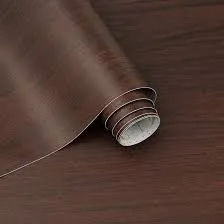- Home
- impregnated melamine paper products
Dec . 16, 2024 22:37 Back to list
impregnated melamine paper products
Impregnated Melamine Paper Products A Comprehensive Overview
Impregnated melamine paper products have increasingly become a cornerstone in various industries, particularly in furniture, interior design, and construction. This unique material is created by saturating paper with melamine resin, which makes it exceptionally durable, water-resistant, and easy to clean. The resulting product not only boasts aesthetic appeal but also offers functional attributes that make it ideal for a variety of applications.
The Manufacturing Process
The production of impregnated melamine paper involves several critical steps. Initially, high-quality paper is chosen as the base material. This paper is then immersed in a solution of melamine resin, which is a thermosetting polymer. The saturation process allows the resin to penetrate the paper fully. After this, the impregnated paper is dried, and the resin cures, resulting in a sturdy product that can withstand various environmental challenges. The final step usually involves pressing the paper under high pressure, which enhances its properties further, making it suitable for high-traffic applications.
Key Properties
One of the most notable characteristics of impregnated melamine paper products is their exceptional durability. Thanks to the chemical resistance and hardness imparted by the melamine resin, these products can endure scratches, stains, and heat—making them ideal for surfaces that see daily use, such as countertops, cabinets, and tabletops.
Water resistance is another significant benefit. This feature allows impregnated melamine paper to be used in environments where moisture is a concern, such as kitchens and bathrooms. The ability to wipe down surfaces without fear of damaging the underlying material ensures that these products maintain their appearance and functionality over time.
Additionally, impregnated melamine paper is available in a vast array of colors and patterns. This versatility allows manufacturers and designers to create visually appealing products that meet the aesthetic demands of modern consumers. Whether it’s a sleek, glossy finish or a textured surface that mimics natural wood, the design possibilities are virtually limitless.
impregnated melamine paper products

Applications
The applications of impregnated melamine paper products extend far beyond traditional uses. In the furniture industry, manufacturers frequently use them for surfaces of cabinets, desks, and shelves. The lightweight nature of the products combined with their robustness makes them popular for flat-pack furniture, where ease of transportation and assembly are crucial.
In interior design, these materials are again utilized for wall panels, decorative surfaces, and tiling options. The ability to produce custom designs allows for unique interiors that reflect individual styles and preferences. Furthermore, impregnated melamine paper is also employed in the construction sector for its insulation properties and aesthetic versatility, enhancing both the functionality and beauty of spaces.
Environmental Considerations
As with many materials, environmental impact is a crucial consideration. Most manufacturers are increasingly focusing on sustainability, using eco-friendly resins and sourcing paper from responsibly managed forests. Impregnated melamine paper products can contribute to green building certifications, as they typically have low VOC (volatile organic compound) emissions.
Recycling options for these products, although limited, are also being developed. As awareness about environmental conservation grows, the industry continues to innovate and find ways to reduce waste and improve the lifecycle of materials.
Conclusion
In summary, impregnated melamine paper products are revolutionizing various sectors with their unique combination of aesthetics, durability, and practicality. Their production is a testament to modern manufacturing techniques, which continue to evolve to meet consumer needs while addressing environmental concerns. As industries continue to innovate and embrace these versatile materials, we can only anticipate the exciting developments that lie ahead in their applications and design possibilities.
Latest news
-
Coated Duplex Board Paper for Superior Double-Sided Printing
NewsAug.27,2025
-
Coated Duplex Board Paper: Premium Packaging & Printing
NewsAug.26,2025
-
High-Quality Decor Base Paper for Furniture & Laminates
NewsAug.25,2025
-
Self Adhesive Paper for Wooden Furniture | Easy DIY Decor & Renovation
NewsAug.24,2025
-
Premium Coated Duplex Board Paper | Grey & White Back Options
NewsAug.23,2025
-
Premium Decorative Base Paper for Stylish Laminates & Panels
NewsAug.22,2025

